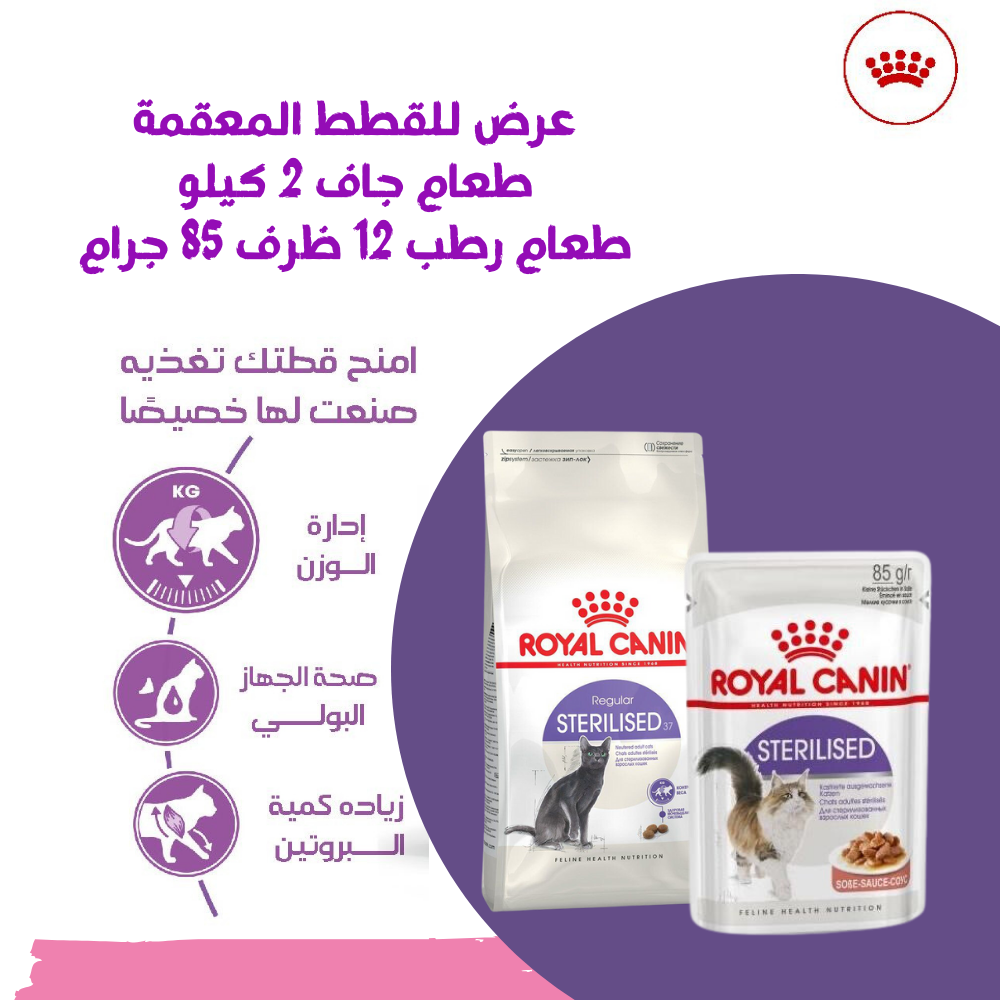Many owners choose to have their cats spayed, which is a safe and common procedure. Our simple guide to sterilization explains what it is, how it works and what effects it can have.
Spaying your female cat is an important decision. It can positively impact her health and well-being, but it also has a number of potential complications and repercussions.
What is sterilization?
Spaying is the process of sterilizing your female cat. In male cats, it is called castration, although this term is sometimes used to refer to the sterilization process in both males and females.
How does sterilization work?
Spaying must be performed by a veterinarian or other qualified professional, and requires your cat to undergo surgery. Your female cat is then prevented from producing eggs that a male cat can fertilize, in addition to preventing her body from secreting sex hormones that attract males.
When can I sterilize my cat?
Whether your cat is male or female, you can have him spayed before puberty. For female cats, at the age of six to seven months, although this can be done safely from the age of three months. Female cats tend to have their first heat cycle when they are six months old; You will notice a change in their behavior as they meow more, rub themselves against your legs or furniture, and assume a mating position whenever someone touches their back.
Should I sterilize my cat?
Whether you spay your female cat, or whether you want her to have kittens in the future, is up to you. There are a number of benefits to spaying your cat; The most important is that it can greatly increase its lifespan.
Sterilization can also:
- Prevent unwanted babies
- Reduce the possibility of your female cat fighting with other cats
- Reducing the possibility of spreading sexually transmitted diseases
- Reducing the number of stray cats that appear due to unwanted kittens
- Reducing the symptoms of heat exposure, which can be annoying and noisy for owners
How will spaying affect my cat's diet?
Once your cat is spayed, you will begin to notice changes in her behavior – including her eating habits. Their appetite for food can increase by 20-25%, but their actual energy expenditure is reduced by 30%. This means that it is much easier for a female cat to eat and store excess energy as fat.
If you decide to spay your cat while she is still young, she will still be growing and therefore needs food to support this without encouraging her to gain weight unnecessarily. Specific food, designed specifically for spayed kittens, is one of the best things to feed them at this stage.
What complications can occur with sterilization?
The biggest complications associated with spaying come from the potential weight your cat can gain, which in turn can lead to serious health conditions. Diabetes and joint disease are both linked to obesity in cats, while sedentary or indoor cats can end up with digestive problems due to lack of movement and spending too much time grooming.
Deciding to sterilize your cat is a decision that can positively impact her health and home life, but it has long-term effects. If you need further advice, speak to your vet who will be able to advise you on the best course of action.
What is the favorite food for sterilized cats?
Royal Canin Sterilized wet and dry food, especially for adult cats after sterilization
Sterilized Dry food for sterilized cats from Royal Canin is specially balanced and complete for comprehensive cats (from 1 to 7 years) who have been sterilized. Which helps the cat maintain its ideal weight after sterilization. This food also contains a careful balance of minerals that help support and maintain the health of the cat's urinary system. The high amount of protein in this food helps maintain healthy cat muscle mass.
Weight maintenance:
It helps reduce the risk of excess weight gain thanks to a moderate level of fat and appropriate daily ratios.
Urinary health:
Sterilized cats are at increased risk of developing urinary tract stones, and STERILIZED 37 helps support urinary tract health with adequate mineral balance.
High amount of protein:
It helps maintain muscle mass thanks to the high amount of protein.
High content of L-carnitine:
L-carnitine contributes to fat metabolism.


